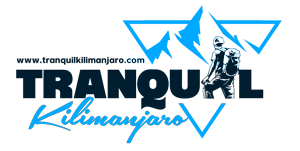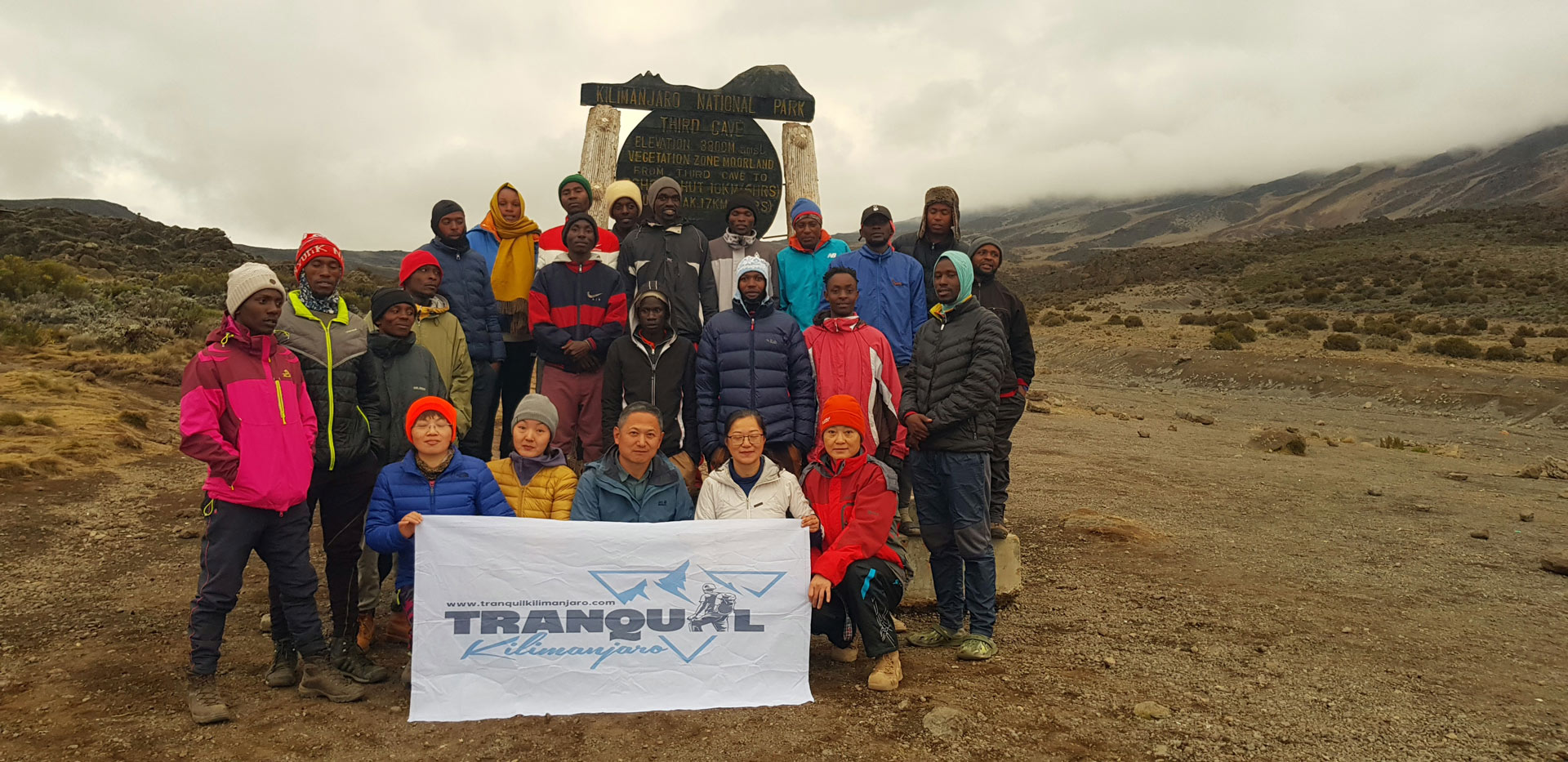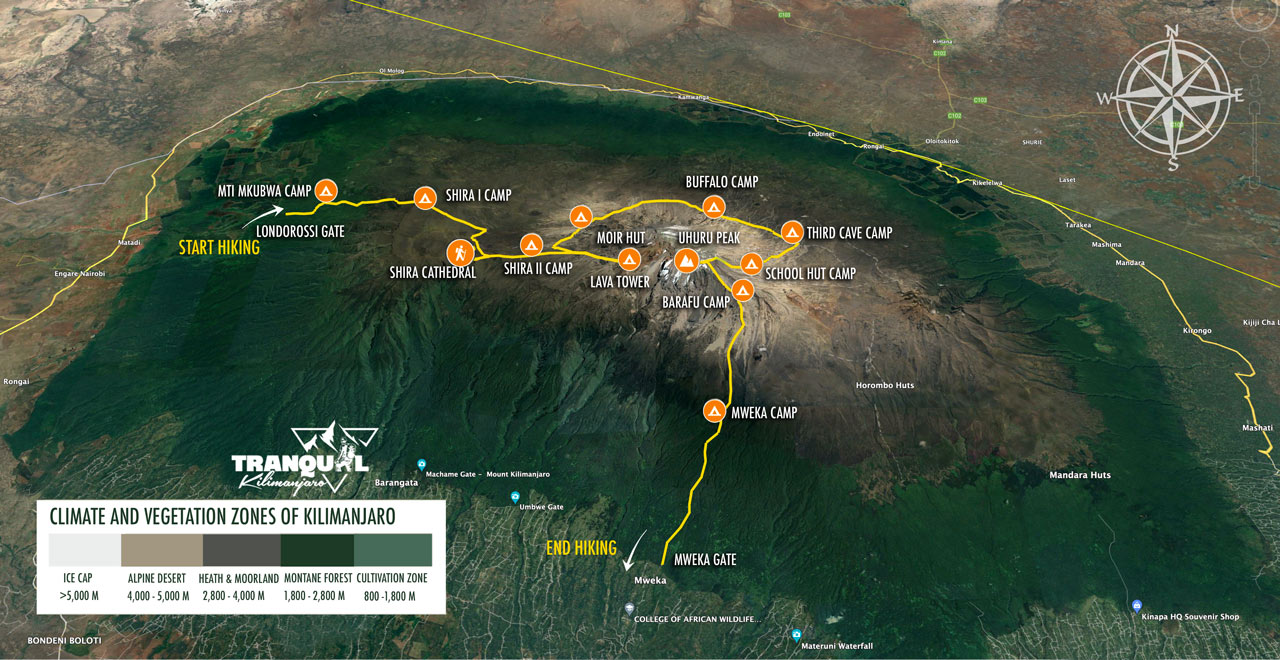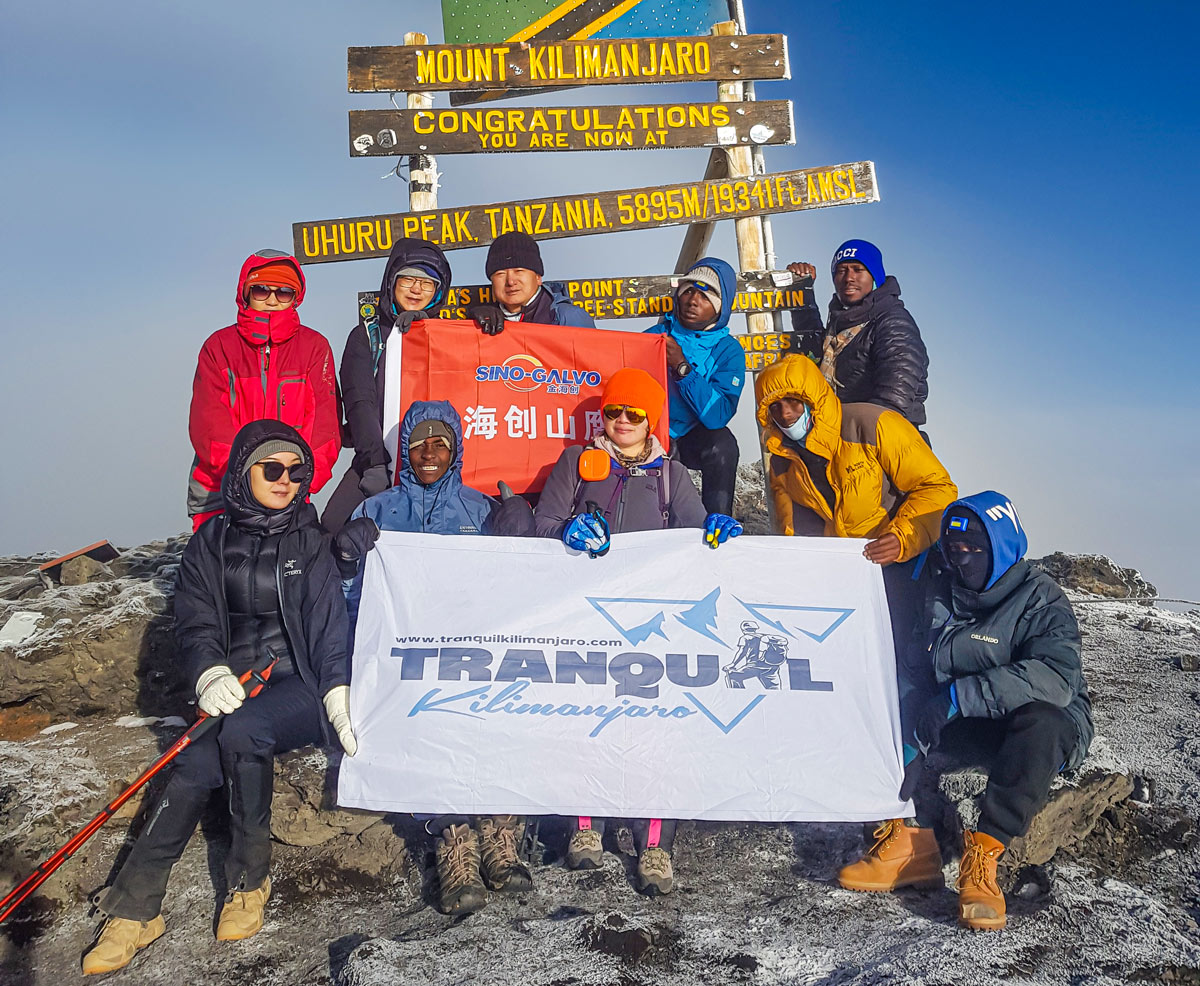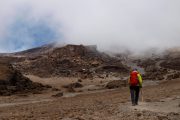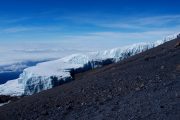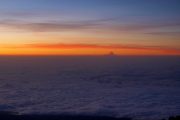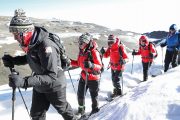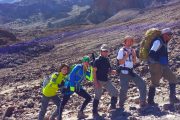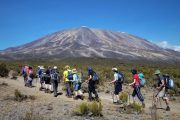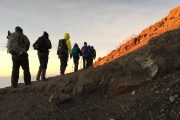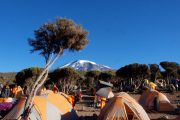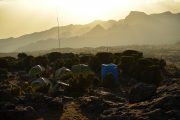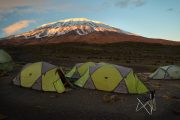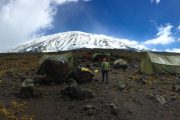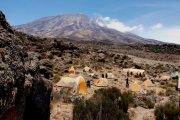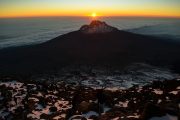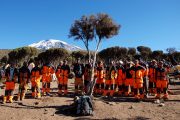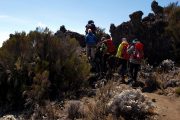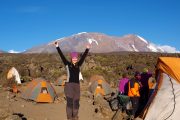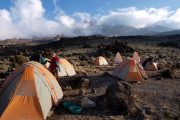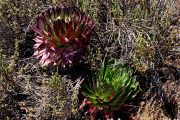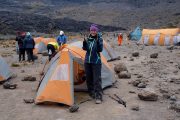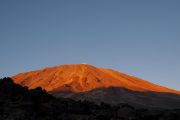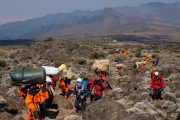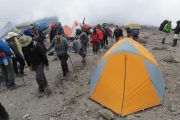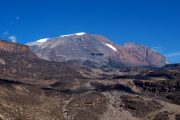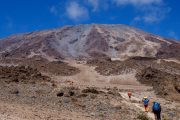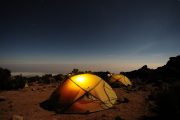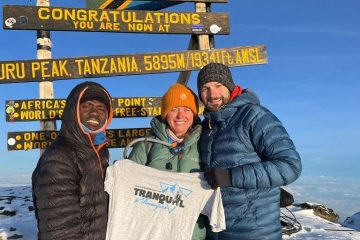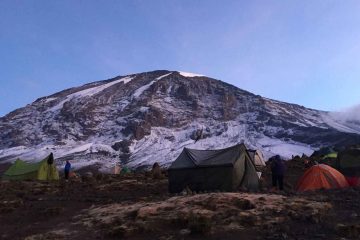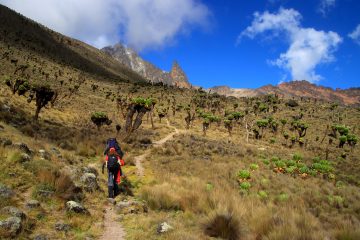Difficulty
The Northern Circuit is the longest and most remote route available. Its extended duration offers an excellent acclimatization profile, allowing you to naturally follow the “walk high, sleep low” principle, which is crucial for adjusting to altitude.
While this route avoids the Great Barranco Wall, the summit night via Gilman’s Point remains demanding. Expect long hours of trekking, so a solid level of fitness and endurance is essential.
Food & Drink
Staying nourished during your climb is critical, especially when altitude conditions may suppress your appetite. To combat this, our head chef has crafted menus that are both appealing and packed with the energy needed to reach the summit. Fresh fruits and vegetables are a daily staple, and fresh meat is provided during the initial part of the trek. On southern routes, we restock supplies at Karanga Camp.
As a post-summit treat, you’ll be greeted with an “All Day English Breakfast” upon returning to Base Camp—just let our cook know your egg preference! Before descending, you’ll also have the chance to savor local Tanzanian dishes like Njegere and Machalari.
- Breakfast
Expect a hearty breakfast featuring porridge, sausage, eggs, toast with marmalade or jam, and a choice of hot drinks like tea, coffee, or hot chocolate. If you’re still hungry, let your guide know—our cooks always prepare extra to ensure everyone is well-fed. - Lunch
Lunch is either packed for you to carry or served hot, depending on your itinerary. A typical packed lunch includes a boiled egg, sandwiches, chicken, crisps, a snack bar, fresh fruit, and a drink. - Afternoon Tea
After a day of trekking, afternoon tea awaits at camp. Along with hot drinks, enjoy peanuts, popcorn, biscuits, and other snacks to replenish your energy. - Dinner
Dinners are substantial, starting with a hearty soup followed by a main course like chicken curry, spaghetti bolognese, or fresh vegetables with rice, pasta, or potatoes. Desserts such as pancakes or banana fritters with maple syrup or Nutella add a sweet finish.
Accommodation
Your itinerary details hotel stays and meal plans. Pre- and post-climb accommodations are based in Moshi. If you’re on safari beforehand, we’ll arrange a hotel in Arusha to minimize travel time.
Tanzania’s infrastructure can be unpredictable, with occasional water and electricity outages. While hotels do their best to assist, these issues are beyond their control.
On the mountain, we use high-quality Mountain Hardwear Trango 3 tents, designed for extreme conditions. These tents are warm, dry, and durable, though space is limited. A separate mess tent provides a comfortable dining area with tables, chairs, and ample headroom. A toilet tent with toilet paper is also provided.
Transport
We prioritize high-standard vehicles and drivers for all transfers. Note that rear seatbelts are not always available in Tanzania. If you have concerns about the vehicle or driving, inform the driver or our local office immediately. Police checks on drivers are common and should not cause alarm.
Luggage
Kilimanjaro National Park enforces a strict 15kg limit per porter for your main bag, including your sleeping bag. Additional porters can be hired at $25 per day.
Tanzania has banned single-use plastic bags since June 2019. Please use sustainable alternatives like packing cubes or dry bags. Zip-lock bags for liquids in cabin baggage are still permitted.
Getting There
For UK or US climbers, flying to Kilimanjaro International Airport (JRO) is ideal. KLM offers flights from major UK and US airports, with a transfer in Amsterdam. Moshi, the gateway to Kilimanjaro, is a 45-minute drive from JRO.
While some climbers fly into Nairobi, we don’t recommend it due to potential delays and baggage issues. Turkish Airlines, Air Emirates, and Qatar also serve JRO, with better experiences reported by US travelers.
For those exploring beyond Kilimanjaro, Vayama offers flights to East Africa, and many climbers enjoy a post-trek beach holiday in Zanzibar.
Sustainable Travel
At Kandoo, we’re committed to sustainability. Starting in 2025, we’ll offset carbon emissions for all trips from arrival to departure. Flights are excluded, so we provide an eC02 calculator for you to offset your air travel.
Fitness & Training
Our Kilimanjaro Training Guide offers valuable tips to prepare physically for the climb.
Budget & Currency
The Tanzanian Shilling is a closed currency, so bring US Dollars (new, crisp bills). ATMs and currency exchanges are available, but notify your bank of international card use. Not all hotels accept cards, so cash is often necessary.
Tipping
We follow the Kilimanjaro Porters Assistance Project’s tipping guidelines: 6−10/dayperporter,6−10/dayperporter,20/day for guides, 12−15/dayforassistantguides,and12−15/dayforassistantguides,and12-15/day for cooks. Tips are per group, not per climber.
On summit night, some porters may assist the group—consider an extra $20 tip for their support. Tips are distributed at the hotel after the climb, with envelopes provided for ease.
